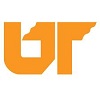
PART 5: Kammann says tension key to creativity and innovation
 (EDITOR’S NOTE: This is the five in a six-part series describing one of the projects undertaken this year by a team of MBA students from the University of Tennessee’s Knoxville campus. We are examining the experience from the perspectives of the client, the students, the mentor/teacher, and the University. Today’s story focuses on the project need as seen through the words of Booth Kammann, President and Chief Executive Officer of the Girl Scout Council of the Southern Appalachians, Inc.)
(EDITOR’S NOTE: This is the five in a six-part series describing one of the projects undertaken this year by a team of MBA students from the University of Tennessee’s Knoxville campus. We are examining the experience from the perspectives of the client, the students, the mentor/teacher, and the University. Today’s story focuses on the project need as seen through the words of Booth Kammann, President and Chief Executive Officer of the Girl Scout Council of the Southern Appalachians, Inc.)
By Tom Ballard, Director of Innovation and Entrepreneurial Initiatives, Pershing Yoakley & Associates, P.C.
“You don’t have true creativity and innovation without tension,” Booth Kammann says in describing a pivotal day for the University of Tennessee (UT) MBA project team that was working with the Girl Scout Council of the Southern Appalachians, Inc. earlier this year.
It was the trial run when the team presented its draft set of recommendations to Kammann before the students formally gave it to the Council’s Board of Directors.
“This was the tension point in the project,” the President and Chief Executive Officer (CEO) of the Council recalled. She describes herself as a leader who likes to challenge thinking.
“If everyone agrees, you are not getting anywhere,” Kammann believes. “Tension creates breakthroughs.”
It challenge of recruiting more volunteers was not something that the Girl Scout Council had not tried to address previously, but those efforts had not produced the desired results that Kammann sought.
“They (the students) had done their environmental scan,” the CEO said of the five-member team led by Kendra Wills. “There were some pieces I had seen before and some I had not.”
“How is this different,” Kammann asked the team, feeling that they had presented broad ideas without specific actions. “How do I operationalize these?”
The attorney turned non-profit organization executive wanted the team to address the “what, why and how” questions.
“It’s not just the broad concepts, but how is it actionable,” Kammann explains. “What does my team do next?”
The CEO concurred with Wills view that it was more about packaging and presentation.
“Packaging can create clarity or feed ambiguity,” Kammann says. She clearly did not want the latter.
“If it (this tension point) had come earlier for them, the project might not have been successful,” Kammann believes. “It (the tension-filled meeting) pushed them to another level.”
In that final presentation to the Girl Scout Council’s Board, everything was well-received, and Kammann says her organization is in the midst of its annual planning process where the recommendations will be carefully considered.
Was the student team input helpful? Kammann is quick to say absolutely.
Was the project a time drain on her? “It did not divert me,” she says. “It was fully aligned with the priorities of my team.”
What advice would you offer those who might participate in a future MBA student project? “Do not walk out of that final meeting without knowing what those first steps are. You can’t execute something you cannot put actions to.”
NEXT: Reflections.
Like what you've read?
Forward to a friend!

